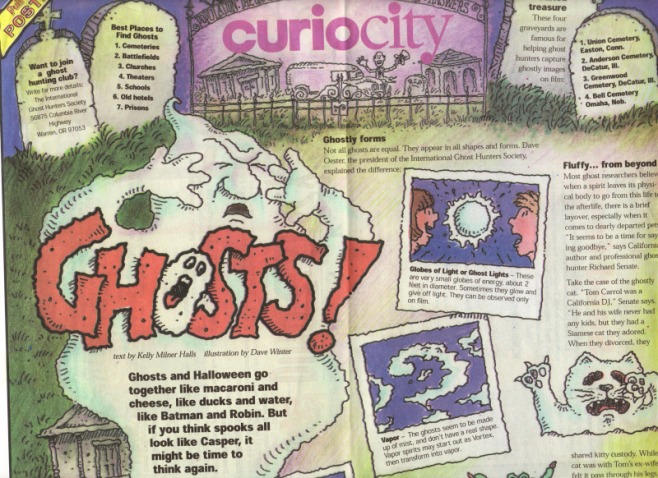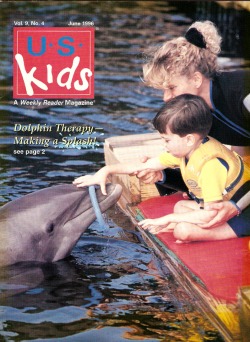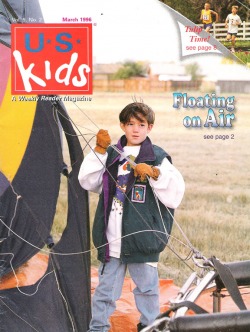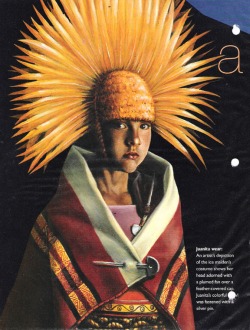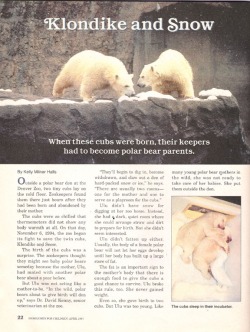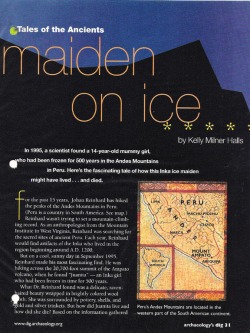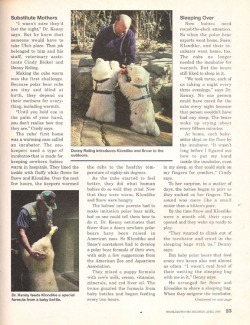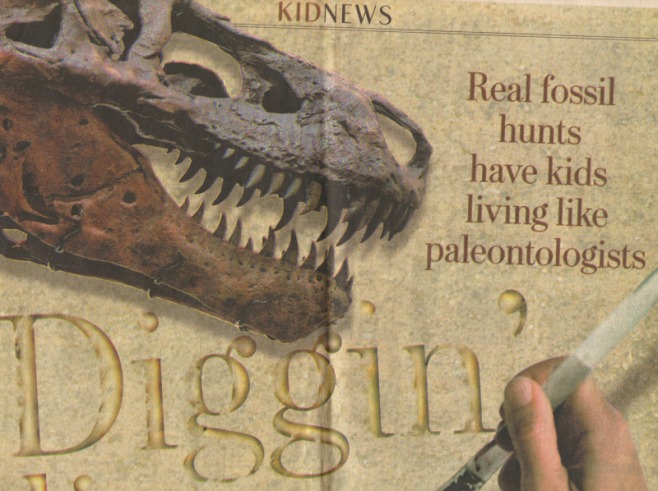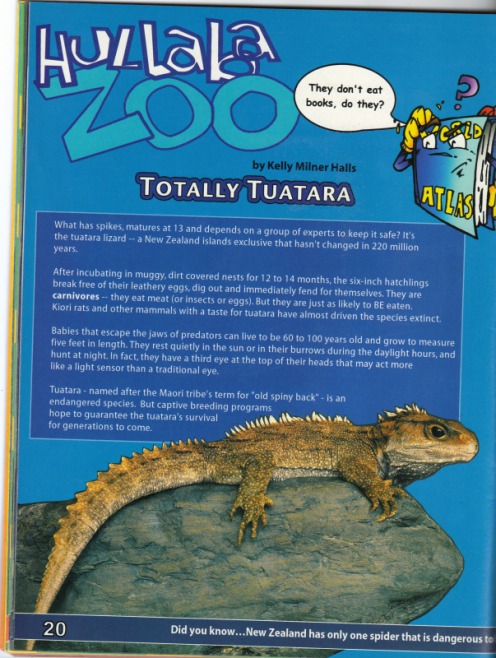Writer's Digest Book Features
1997 Guide to Literary Agents
Electronic Rights: Managing the Digital Revolution
1999 Children's Writers and Illustrators Market
Writing for Babies and Toddlers
A Perfect Partnership Leads to Stinky Sweet Success (Scieszka and Smith)
2002 Children's Writers and Illustrators Market
One Voice in a Million
2004 Children's Writers and Illustrators Market
Spirit ala Tomie dePaola: A Distinctive Voice in Children's Literature
The Mania of Books to Film
2007 Children's Writers and Illustrators Market
Interviewed for an article
2011 Children's Writers and Illustrators Market
Featured in an article, Hook Readers with Strong Beginnings and Endings
1999 Novel and Short Story Market
Simon & Schuster's Chuck Adams
2001 Novel and Short Story Market
Fiction in a Fifty Year Career -- John Jakes
Revolution Online
Feature written with Terri See
2002 Novel and Short Story Market
Rock-and-Roll is Still Beating -- Ridley Pearson
2002 Insider's Guide: Agents, Editors and You
The Agent Author Relationship: What a Writer Should Expect
2005 Writer's Digest Handbook of Magazine Article Writing
Featured in an article
2006 Writer's Market
Creating a Buzz Without a Budget
Institute of Children's Literature Books
Children's Writers Guide to 2008
Featured in an article
Children's Better Health Institute
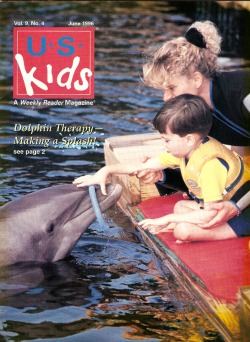
CAMPING IN OR OUT (US Kids, Cover Story)
ONE TEE-RIFFIC KID (US Kids, Cover Story)
PART SLED, PART ROCKET: LUGE (US Kids, Cover Story)
THERE'S SNOW PLACE LIKE HOME: CROSS COUNTRY SKIING (US Kids, Cover Story)
DIGGING DINOS: WYOMING DINOSAUR CENTER (US Kids, Cover Story)
LIVING IN THE STATE OF YO-YO (US Kids, Cover Story)
MY GRANDFATHER MADE ME: TOMMY SMOTHERS (US Kids)
WITH A HOP, SKIP AND A JUMP: ROPE SKIPPING (US Kids, Cover Story)
SWIM, CYCLE, RUN: TRIATHLETES (US Kids, Cover Story)
FLOATING ON AIR: HOT AIR BALLOONING (US Kids, Cover Story)
TAKING CARE OF DESTINY: HORSEBACK RIDING (US Kids, Cover Story)
DOLPHIN THERAPY: MAKING A SPLASH (US Kids, Cover Story)
OLYMPIC KID CONNECTION (US Kids, Cover Story)
TAEKWONDO'S GOLDEN BOY (US Kids, Cover Story)
GOING BIG IN COLORADO: SNOWBOARDING (US Kids, Cover Story)
MADE FOR MANATEES (US Kids, Cover Story)
JUGGLING SUCCESS: 13-YEAR-OLD JUGGLER (US Kids)
GEAR UP FOR THE ROBOT ZOO (US Kids)
BAG A NEW HOBBY: FOOTBAG (US Kids)
PISTOL PACKING PALEONTOLOGIST (Children's Digest)
SKYDIVING: WHAT A BLAST/INDOOR SKYDIVING (Cover Story, Child Life)
DINO BUILDER (Child Life)
CHRISSIE ZARTMAN: OVER THE TOP/VOLLEYBALL (Child Life)
MUSH, SLUSH AND GLORY: SLED DOGS (Child Life)
SOCK IT TO ME! HISTORY OF SOCCER (Child Life)
Shrouded in Mystery: Mummies and Ancient Burial
by Kelly Milner Halls
Do kids love to study science and history? Ask a group of 9- to 12-year-olds and watch these subjects crash and burn. “That’s because they’ve become an exercise in repetition and memorization,” says author and former teacher James M. Deem. “But that doesn’t have to be the case.”
Like other devoted children’s nonfiction writers, Deem has adopted creative measures to spark scientific and historical bliss. He has enlisted the field of archaeology and an army of mummies to help with academic flare. His books and his Web site about archaeology and dead people help bring yawn-spawning science and social studies to life.
Mummies and their ghoulish image appeal to young people. “You may have a few squeamish kids,” Deem admits, “but most of them are really into the subject if it’s presented in a way that engages them.” Graphic photos are a part of that hypnotic blend.
Are teachers as devoted to books about mummies and burial practices as their students? “No,” Deem says. “Some teachers are grossed-out and don’t want to see mummy books in their classrooms. But that’s a big mistake. My philosophy is simple. If we can see mummies in a public museum, why shouldn’t kids read about them in books? Even reluctant readers get into this topic. It sounds like scary movies, but the kids are literally being pulled into learning about history and science, without knowing it.”
Bone-chilling photos may spark an interest, but according to Deem, lasting educational impact relies on good storytelling. “Some books are filled with gross pictures,” Deem says. “But what stays with a child are the stories that go along with the pictures—a glimpse at the ancient civilization or a look at the archaeologist who discovered the mummy. Those stories bring the mummies to life.”
How many different kinds of mummies exist around the world? “Egypt may be the best known location,” Deem says, “but there were at least 20 civilizations or societies that practiced mummification. And dozens and dozens of mummies were preserved by an accident of nature.”
Such diversity makes mummies and the archaeological finds that go with them a natural for the classroom. But Deem suggests that archaeology brings another forbidden topic into focus as well—death. “The subject is not well addressed in our society,” he says. “People don’t want to talk about death because mortality scares them. But mummies allow kids to look at death in a new way. They think, ‘If I can look at this and talk about this, maybe it’s okay to talk about my dead Uncle Bob, too.’ It makes the topic feel a little safer.”
“I don’t want to encourage kids to gawk,” Deem says. “But I do want them to wonder who these people were and what stories their remains are silently telling.”
Bibliography Aliki. Mummies Made in Egypt. 1979. 32p. HarperTrophy, paper, $6.99 (0-06-446011-8).
Gr. 1–3. A strong, beautifully illustrated introduction to the concept of Egyptian mummies and the afterlife beliefs that inspired them. Aliki’s text is as clear and praiseworthy as her signature artwork.
Colman, Penny. Corpses, Coffins, and Crypts: A History of Burial. 1997. 224p. Holt, $17.95 (0-8050-5066-3).
Gr. 7–up. Colman explores the topics of death and burial and the customs that have grown up around them in cultures around the world and throughout history. This sensitive, candid title mixes heartfelt personal experience with solid, sometimes gruesome information about the history of burial.
Deem, James M. Bodies from the Bog. 1998. 48p. Houghton, $16 (0-395-85784-8).
Gr. 3–6. Bog bodies—people naturally mummified by oxygen-starved peat bogs—have been found throughout Europe. Deem explores the lives and deaths of more than half a dozen individuals, as well as the mysterious chemical accident that made their preservation possible, in this fascinating book. Deem’s Web site at http://www.jamesmdeem.com features many useful links about mummies for educators and students.
Deem, James M. How to Make a Mummy Talk. Illus. by True Kelley. 1995. 184p. Houghton, $16
(0-395-62427-4).
Gr. 3–6. Deem mixes the gruesome with giggles to produce this fully illustrated digest of historical mummies from around the world. Black-and-white art perfectly highlights the sometimes quirky realm of the dead, as seen through Deem’s respectful eyes. For a fictional title in which the mummy really does talk, see Eve Bunting’s lyrical picture book I Am the Mummy Heb-Nefert (Harcourt, 1997), in which a female mummy reminisces about the day she became the pharaoh’s wife.
Hansen, Joyce, and Gary McGowan. Breaking Ground, Breaking Silence: The Story of New York’s African Burial Ground. 1998. 144p. Holt, $17.95 (0-8050-5012-4).
Gr. 7–12. As astonishing as it sounds, an eighteenth-century African slave burial ground was discovered under the streets of Manhattan in 1991. This amazing collection of photographs and Hansen’s occasionally repetitive text tell the story of those lost Americans, including how they endured their burdensome way of life and how they died.
Hawcock, David. Amazing Pop-Up Pull-Out Mummy Book. 2000. 12p. DK, $19.95 (0-7894-6507-8).
Gr. 4–6. Both educators and young readers will flock to this imaginative pop-up book created by the author of Amazing Pull-Out Pop-Up Body in a Book (DK, 1997). Archaeological proof of embalming techniques is among the book’s highlights, as is the great pull-out classroom visual that comes with this innovative book. For more on mummies and Egypt see DK’s Mummies and the Secret Worlds of Ancient Egypt by John Malam, Mummy by James Putnam, and Ancient Egypt Revealed by Peter Chrisp.
Holub, Joan. Valley of the Golden Mummies. 2002. 32p. Grosset & Dunlap, $14.89 (0-448-42817-2); paper, $5.99 (0-488-42661-7).
Gr. 2–4. This title in the Smart about History series represents a fictional student’s report on the Valley of the Golden Mummies in Egypt. The dynamic page design and Holub’s appealing cartoon drawings will engage readers.
Logan, Claudia. The 5,000-Year-Old Puzzle: Solving a Mystery of Ancient Egypt. Illus. by Melissa Sweet. 2002. 48p. Farrar/Melanie Kroupa, $17 (0-374-32335-6).
Gr. 3–5. A fictional boy named Will joins Giza 7000X, an actual archaeological dig in 1920s Egypt, and participates in the tedious, thrilling process of excavating a tomb. Will’s postcards home, documentation and photos from the actual excavation, and factual sidebars accompany Sweet’s bright paintings. This title gives an excellent idea of the intense, careful work demanded in archaeological excavations.
McIntosh, Jane. Archaeology. 2000. 64p. DK, $15.95 (0-7894-5864-0).
Gr. 2–6. Like most Eyewitness books, this glance at archaeology is illustration rich, text light. But don’t mistake brief text for unimportant text. Archaeology is a great book for reluctant readers, who will learn about ancient civilizations through vivid photographs and illustrations as well as energetic text.
Mummies, Gods, and Pharaohs. 2000. 50p. Workman, $9.95 (0-7611-1757-1).
Gr. 2–up. Part of the Fandex Family Field Guide series, this look at King Tut, the Valley of the Kings, and more than 150 Egyptian tombs will dazzle even the most resistant readers. Don’t miss the die-cut cards on hieroglyphics, the Sphinx, Howard Carter, and grave robbers.
O’Connor, Jane. The Emperor’s Silent Army: Terracotta Warriors of Ancient China. 2002. 48p. Viking, $17.99 (0-670-03512-2).
Gr. 4–7. This fascinating title reveals the story behind a buried army of 7,500 terracotta soldiers and horses discovered in China in the 1970s, now known to be part of the first emperor’s tomb. O’Connor’s engaging text describes the army’s excavation after more than 2,200 years, and full-color photographs show the individuality of the statues, created to protect the tomb.
Pemberton, Delia. Egyptian Mummies: People from the Past. 2001. 48p. Harcourt, $18 (0-15-202600-2).
Gr. 2–6. Honored by the National Science Teacher’s Association as a 2002 Best Book, Pemberton’s lively title uses more than 100 photographs and a spirited text to explore how forensic science helps scientists and average citizens understand the life and times of ancient Egypt, and archaeology in general. Includes a glossary, index, and bibliography.
Reinhard, Johan. Discovering the Inca Ice Maiden: My Adventures on Ampato. 1998. 48p. National Geographic, $19.95 (0-7922-7142-4).
Gr. 2–6. World adventurer Reinhard tells young readers of his astonishing find—an approximately 14-year-old Inca girl sacrificed to the angry god of Ampato, a Peruvian volcano, then mummified in frost and ice more than 520 years ago. Remarkable photo documentation of the mummy and the wealth of artifacts found with the so-called Ice Maiden make this a worthwhile purchase for any library in need of archaeological gems.
Rice, Melanie, and Christopher Rice. Pompeii: The Day a City Was Buried. 1998. 48p. DK, o.p.
Gr. 2–6. In a noble attempt to bring ancient history to life, this exciting book in the DK Discoveries series uses short bursts of lively text alongside dozens of photographs and illustrations. It tells the story of the Roman city of Pompeii, and how it was swallowed and preserved forever by the sudden and deadly eruption of a volcano.
Sloan, Christopher. Bury the Dead: Tombs, Corpses, Mummies, Skeletons, and Rituals. 2002. 64p. National Geographic, $18.95 (0-7922-7192-0).
Gr. 5–9. From Peru to Egypt to Russia to China, this in-depth look at the archaeological study of ancient burials gives wonderful insight into long-vanished cultures. Stunning full-color photos of mummies and artifacts as well as an attractive page design translate into high reader appeal, and the smartly written text is engaging.
Tubb, Jonathan N. Eyewitness: Bible Lands. 2000. 64p. DK, $15.95 (0-7894-5770-9).
Gr. 3–6. The New York Times called this title a “mini-museum between the covers of a book.” Rich in photographs, illustrations, and well-crafted text, it explores the archaeological evidence—trinkets, jewelry, weapons, coins, and more—that goes hand-in-hand with biblical settings. Death and burial is the focus of one chapter.
Wilcox, Charlotte. Mummies and Their Mysteries. 1993. 64p. Carolrhoda, $18.95 (0-87614-
767-8); paper, $7.95 (0-87614-643-4).
Gr. 5–8. Riveting and crisply produced photos mark this introduction to mummies found in Egypt, Peru, and the Far East, as well as cave mummies and mummies in bogs and frozen in ice. This thoroughly researched volume presents a discussion of the various processes of mummification and numerous factual sidebars.
Wilcox, Charlotte. Mummies, Bones, and Body Parts. 2000. 64p. Carolrhoda, $18.95 (1-57505-428-0); paper, $7.95 (1-57505-486-8).
Gr. 4–7. In this solid title, Wilcox touches on many aspects of how death is treated in various cultures, including the indigenous peoples of the Americas. Embalming techniques and cryonics are discussed, and uncompromising photos of important archaeological finds are scattered liberally throughout the text.
Kelly Milner Halls is a Spokane-based freelance writer. Her latest book, Dinosaur Mummies, will be published later this year.
True Colors
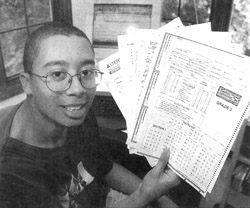
Special to The Atlanta Journal-Constitution, News for Kids
Date: 1997-1998 Roswell student whose parents are of different races is working to win Project RACE.
When 14-year-old Roswell resident Ryan Graham first talked to a committee of Congress members in Washington six years ago, he was one of the youngest Americans ever to testify. He was a fourth-grader with a vision -- a little kid with a big idea.
"My mom is white, my dad is black," Ryan explained to News for Kids. That makes him multiracial -- a person with two distinct racial identities.
"Most federal forms force me to choose between those two races," Ryan said. "But that bothers me because I am BOTH." The forms Ryan is talking about are for things such as taxes, employment and school registration.
To add to the confusion, the Census Bureau -- the federal agency that keeps track of just who lives in America -- asks multiracial children to choose, or claim, the race of their mothers as their own race. The Census Bureau takes a big survey every 10 years. Its next survey won't be conducted until 2000.
The 1990 survey revealed that two-thirds of people surveyed who had one black parent and one white parent called themselves black -- regardless of their mother's racial heritage.
But what other people decide isn't the point, Ryan said.
"It should be up to the individual," he says. And so, for the past six years, he has worked hard (alongside his mother, Susan) to change the way our government sees and defines skin color. Susan Graham is founder of an organization called Project RACE, which stands for "Reclassify All Children Equally."
Ryan's big plan is to convince Congress that adding a "multiracial" box to government forms is not only smart, but fair.
"Can you imagine how you would feel if you were a kid and you had to walk up and ask the teacher, in front of the whole class, 'Where do I put my X?' " Ryan says. "It makes a lot of kids feel alienated and alone, when they should feel proud of who they are."
In addition to his work in Washington, Ryan has been on TV news shows on networks including CNN, ABC and Nickelodeon. He's testified before some state goverments including Georgia and Michigan. He helped confince lawmakers in both states that adding a "multiracial" choice totheir forms was a good thing to do. At this time, eight states have added the multiracial choice to some forms. Those states are Georgia, Florida, Ohio, Illinois, Indiana, Maryland and North Carolina. But for Ryan, that just means there are 42 more states to go.
In 1990, 3 million citizens told the Census Bureau they were living with someone of a different race, and had given birth to 2 million children. According to the New York Times, a 1995 telephone survey sponsored by the federal government found that 1.6 percent of the people questioned considered themselves to be "multiracial."
With less than 2 percent of the American public affected, you might think the multiracial issue isn't a big deal.
"But it is to us," says Ryan. "One day a kid asked me if I was 'mixed.' I said, no, I'm multiracial. He said, 'What's the difference?' and I said, puppies are mixed. People are multiracial."
House Speaker Newt Gingrich seems to agree. In a speech he gave in June 1997, Gingrich supported Ryan's cause.
Ryan says it's really not just a matter of a box on a test or on a federal form.
"It's a way to stand up and say it doesn't matter what color your skin might be," he says. "What matters is who you are inside."
Originally appeared in the Atlanta Journal Constitution
Also posted on Graham's PROJECT RACE website.
http://www.projectrace.com/inthenews/archive/inthenews-ununun.php
